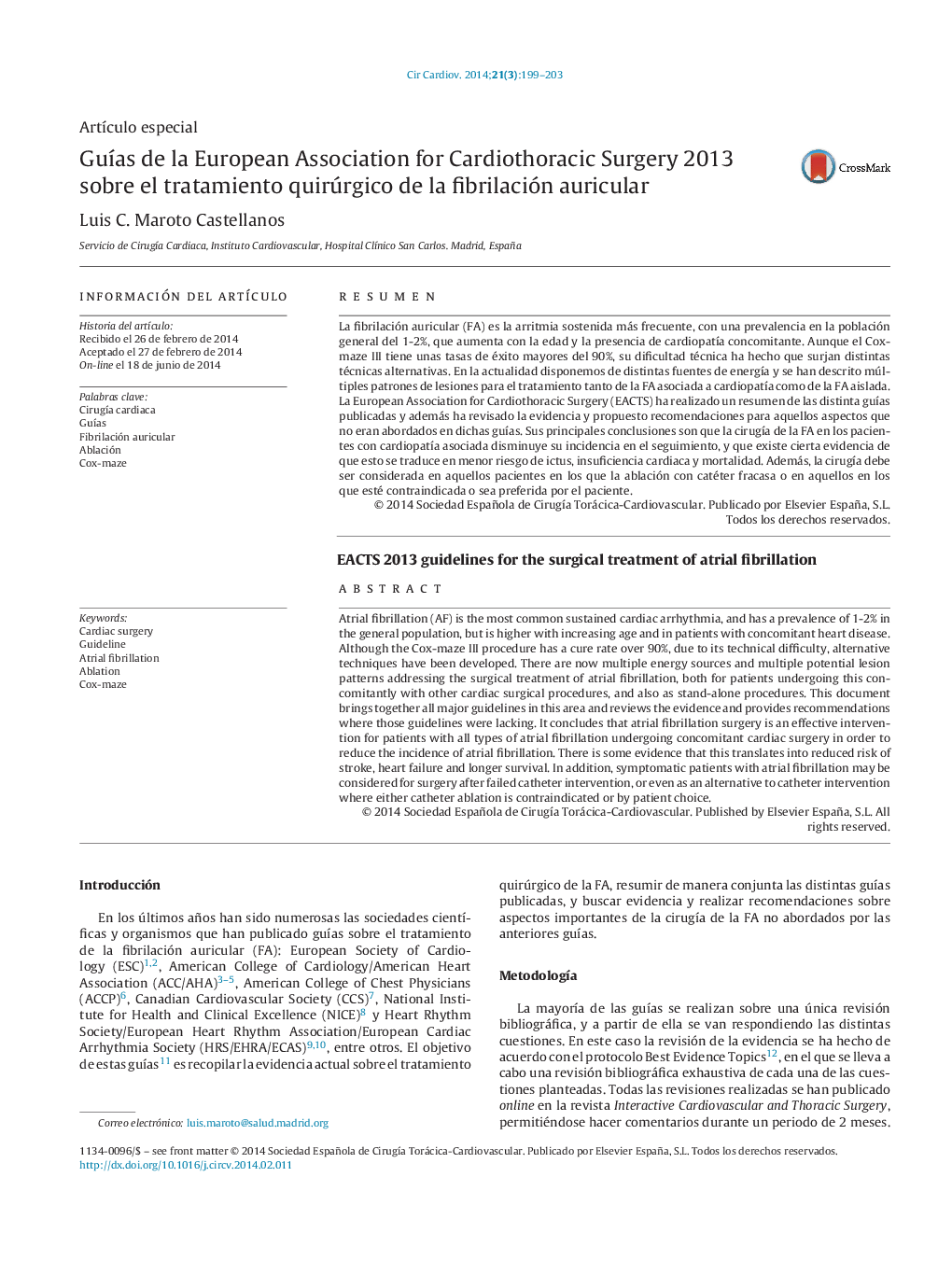| Article ID | Journal | Published Year | Pages | File Type |
|---|---|---|---|---|
| 2908143 | Cirugía Cardiovascular | 2014 | 5 Pages |
ResumenLa fibrilación auricular (FA) es la arritmia sostenida más frecuente, con una prevalencia en la población general del 1-2%, que aumenta con la edad y la presencia de cardiopatía concomitante. Aunque el Cox-maze III tiene unas tasas de éxito mayores del 90%, su dificultad técnica ha hecho que surjan distintas técnicas alternativas. En la actualidad disponemos de distintas fuentes de energía y se han descrito múltiples patrones de lesiones para el tratamiento tanto de la FA asociada a cardiopatía como de la FA aislada. La European Association for Cardiothoracic Surgery (EACTS) ha realizado un resumen de las distinta guías publicadas y además ha revisado la evidencia y propuesto recomendaciones para aquellos aspectos que no eran abordados en dichas guías. Sus principales conclusiones son que la cirugía de la FA en los pacientes con cardiopatía asociada disminuye su incidencia en el seguimiento, y que existe cierta evidencia de que esto se traduce en menor riesgo de ictus, insuficiencia cardiaca y mortalidad. Además, la cirugía debe ser considerada en aquellos pacientes en los que la ablación con catéter fracasa o en aquellos en los que esté contraindicada o sea preferida por el paciente.
Atrial fibrillation (AF) is the most common sustained cardiac arrhythmia, and has a prevalence of 1-2% in the general population, but is higher with increasing age and in patients with concomitant heart disease. Although the Cox-maze III procedure has a cure rate over 90%, due to its technical difficulty, alternative techniques have been developed. There are now multiple energy sources and multiple potential lesion patterns addressing the surgical treatment of atrial fibrillation, both for patients undergoing this concomitantly with other cardiac surgical procedures, and also as stand-alone procedures. This document brings together all major guidelines in this area and reviews the evidence and provides recommendations where those guidelines were lacking. It concludes that atrial fibrillation surgery is an effective intervention for patients with all types of atrial fibrillation undergoing concomitant cardiac surgery in order to reduce the incidence of atrial fibrillation. There is some evidence that this translates into reduced risk of stroke, heart failure and longer survival. In addition, symptomatic patients with atrial fibrillation may be considered for surgery after failed catheter intervention, or even as an alternative to catheter intervention where either catheter ablation is contraindicated or by patient choice.
